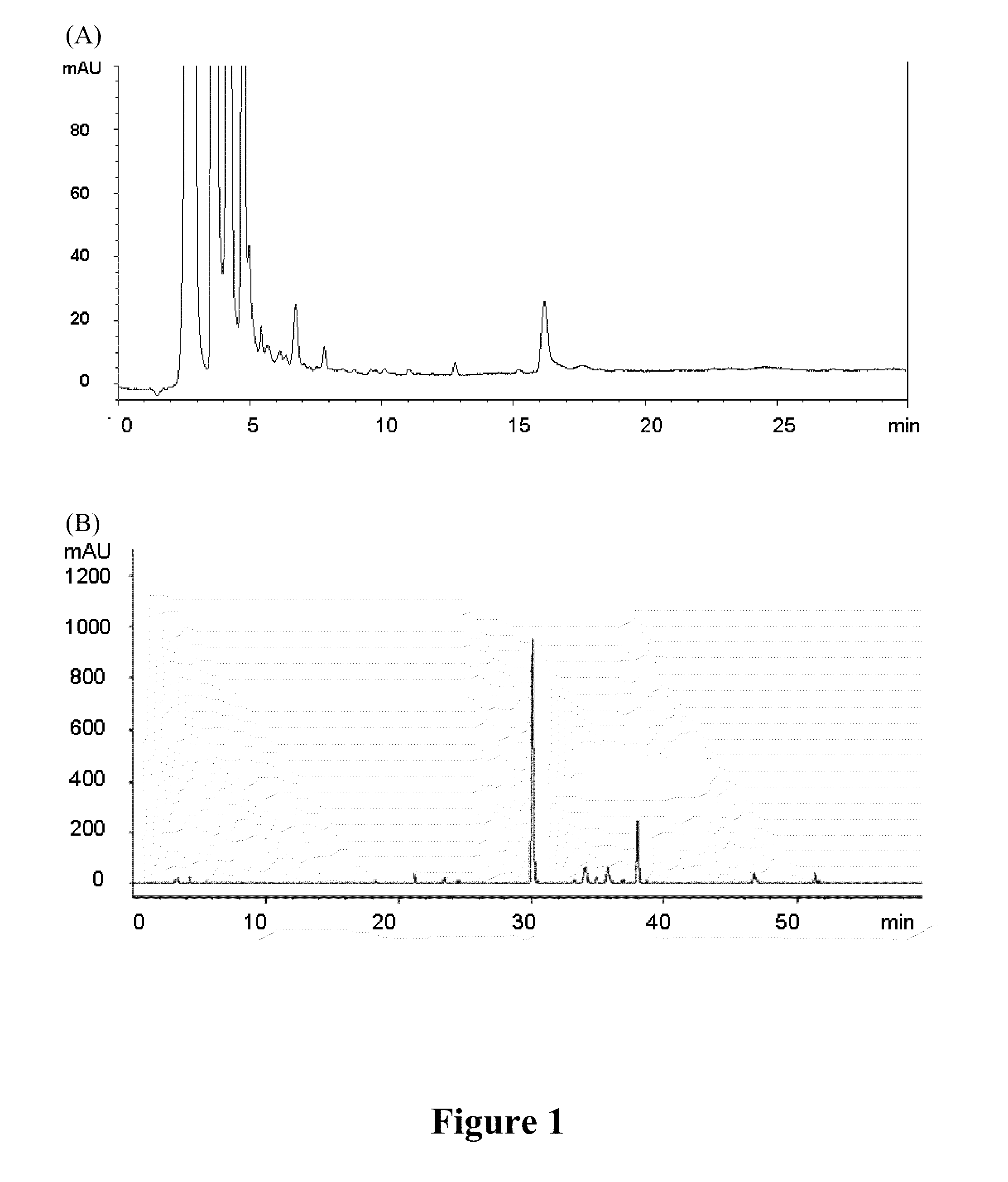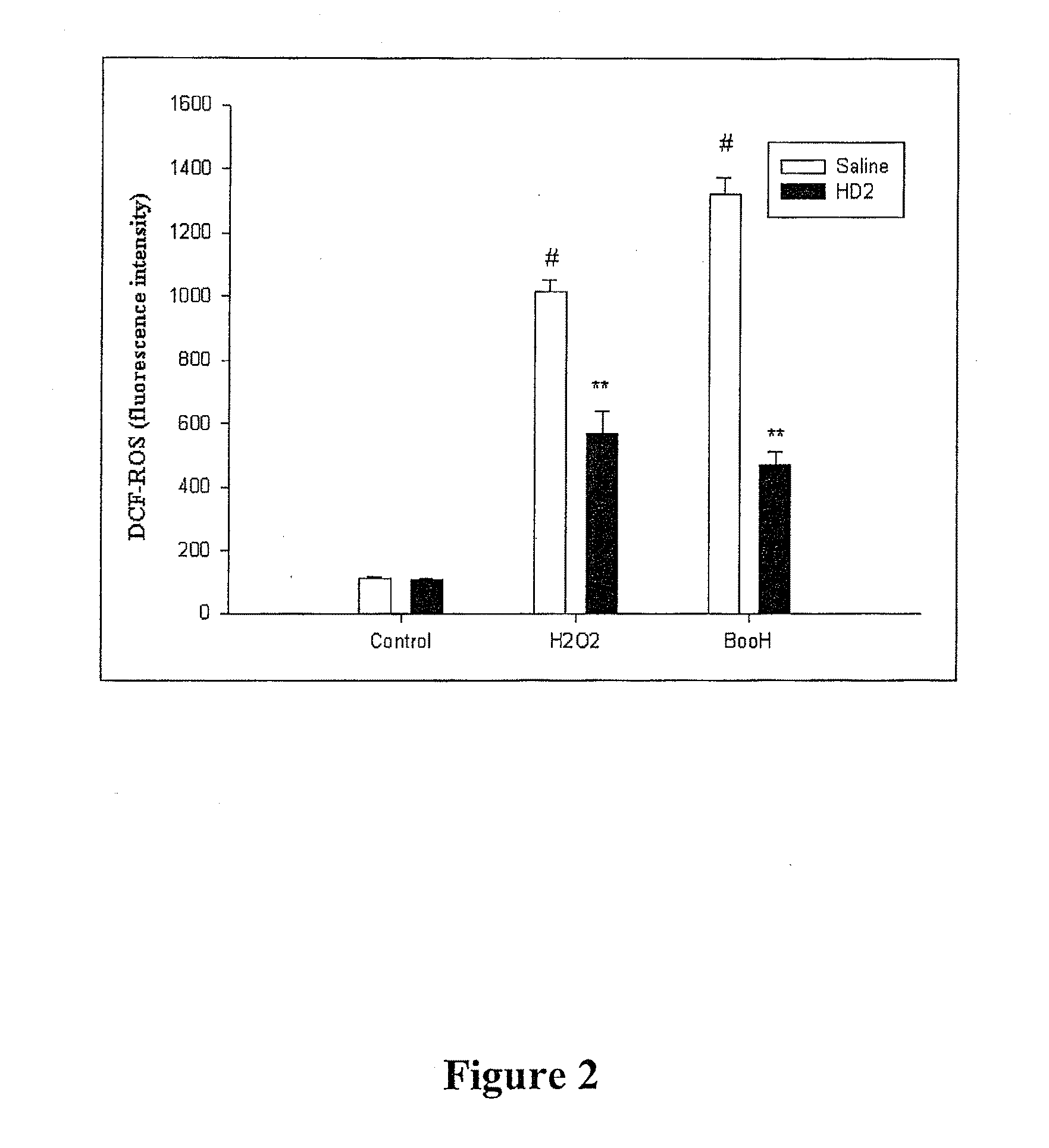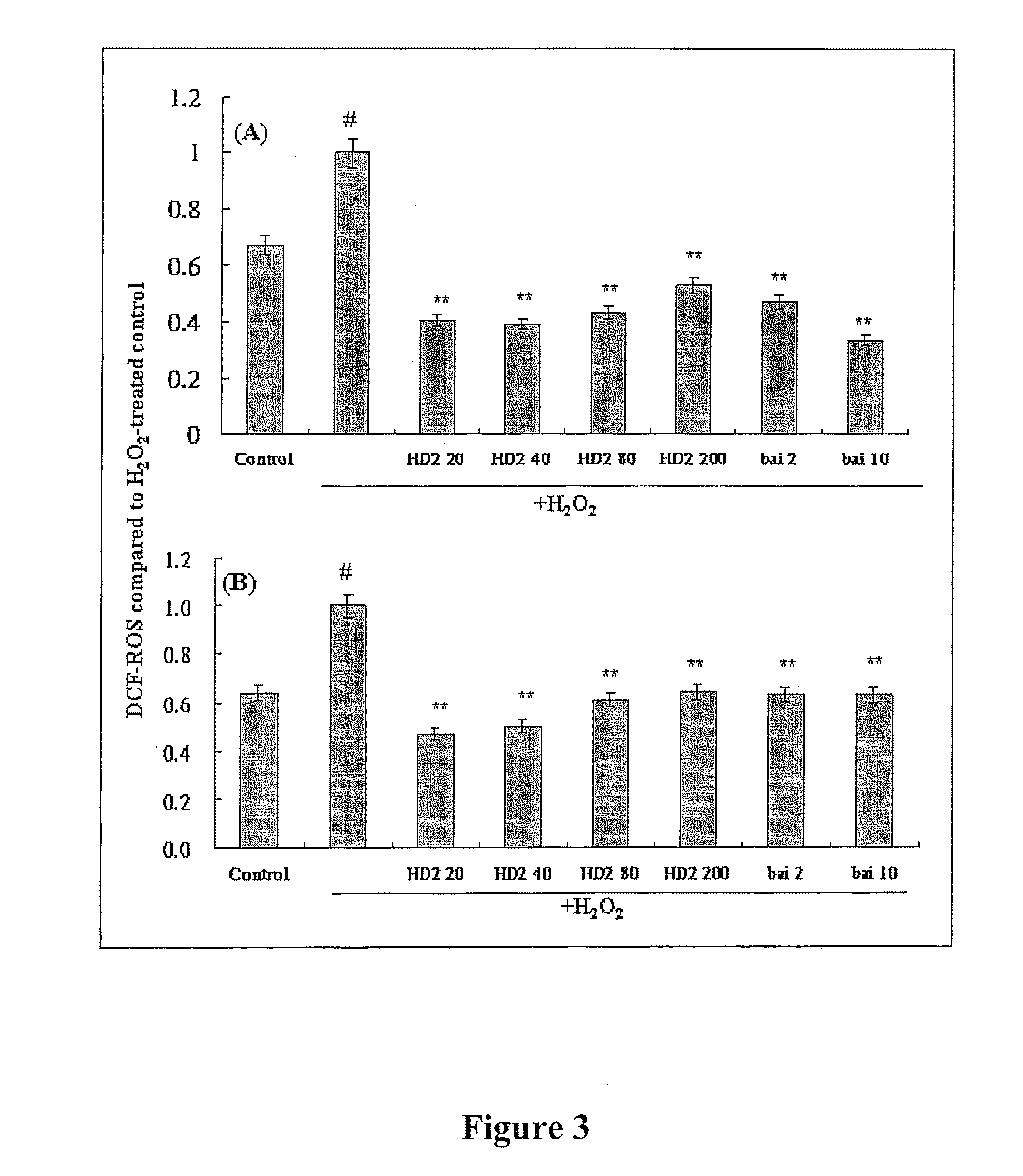Method for treating neural injuries
a neural injury and neural tube technology, applied in the direction of biocide, plant/algae/fungi/lichens, drug compositions, etc., can solve problems such as disability and even death, and achieve the effect of improving functional recovery
- Summary
- Abstract
- Description
- Claims
- Application Information
AI Technical Summary
Benefits of technology
Problems solved by technology
Method used
Image
Examples
example 1
Preparation and Characterization of the Herbal Composition
[0038]An aqueous herb herbal composition of bupleurum and scutellaria, i.e., HD2, was prepared based on the methods described in Wang et al., (2005) and Lee et al. (2008) supra. Briefly, the roots of S. baicalensis Georgi (36 g) and the roots of B. scorzonerifolfium Wild (84 g) were boiled in 3600 ml of water at 100° C. until the total volume reduced to 1000 ml. The extracts were then filtered through layers of gauze, and the filtrate was collected and lyophilized. The yield of the lyophilized powder was about 16 gm.
[0039]To identify the ingredients of the HD2, a high performance liquid chromatography (HPLC) analysis was conducted based on the method described in Lee et al. (2008). Briefly, the HPLC analysis was performed with a stationary phase (Cosmosil 5 C18-MS-II column) and a mobile phase (10 mM monosodium phosphoric acid-acetonitrile; 69:31, v / v, pH 3.0), at a flow rate of 1 ml / min. The UV detector wavelengths were set ...
example 2
HD2 performed as an antioxidant in cells of the nervous system
[0042]1. Microglia Cells
[0043]It is known that generation of free radical plays an important role in pathophysiological development of nervous system injury, and a variety of free radical scavengers have been suggested to have therapeutic potential for protecting the injured nervous system. For reviews, see Kwon et al. Spine J. 4: 451-464 and Wang et al. (2006), Curr. Pharm. Des. 12(27):3521-33.
[0044]In the present example, oxidative stress was induced by treating microglia cells with free radical generators, i.e., H2O2 or t-BOOH, and the antioxidant activity of HD2 was examined by a dichlorofluorescein (DCF) assay using a fluorescent microplate reader.
[0045]2′,7′-dichlorodihydrofluorescein diacetate (DCFH-DA, Molecular Probe D-399; Invitrogen, CA), a sensitive and widely used probe for detection of intracellular oxidant production, was used to detect the formation of intracellular reactive oxygen species (ROS). DCFH-DA c...
example 3
HD2 Inhibited Toxin-Induced ATP Depletion and Cell Death in Mixed Glial Cells
[0055]Mixed glial cultures were prepared from cerebral cortex of newborn Spraque-Dawley (SD) rats as described in Tsai and Lee (Free Radical Biology &Medicine 24 (1998): 705-713). Briefly, triturated cortex or spinal cords were passed through nylon clothes (80 and 10 μm), plated in 75 cm2 flasks, and maintained in DMEM containing 5.5 mM glucose and supplemented with 10% fetal calf serum (FCS). The cells were incubated at 37° C. in a water-saturated atmosphere of 5% CO2 / 95% air. To free cultures from contaminated cells, cultures were purified on the 10th day by shaking overnight at 180 rpm to remove the suspended cells. The cultures in the flasks were replated into multiwell plates. The cultures were subsequently confirmed to exhibit greater than 90% positive staining for the glial fibrillary acidic protein (GFAP), an astroglial marker.
[0056]1. ATP Measurement
[0057]Intracellular ATP level was measured from t...
PUM
| Property | Measurement | Unit |
|---|---|---|
| temperature | aaaaa | aaaaa |
| total volume | aaaaa | aaaaa |
| total volume | aaaaa | aaaaa |
Abstract
Description
Claims
Application Information
 Login to View More
Login to View More - R&D
- Intellectual Property
- Life Sciences
- Materials
- Tech Scout
- Unparalleled Data Quality
- Higher Quality Content
- 60% Fewer Hallucinations
Browse by: Latest US Patents, China's latest patents, Technical Efficacy Thesaurus, Application Domain, Technology Topic, Popular Technical Reports.
© 2025 PatSnap. All rights reserved.Legal|Privacy policy|Modern Slavery Act Transparency Statement|Sitemap|About US| Contact US: help@patsnap.com



